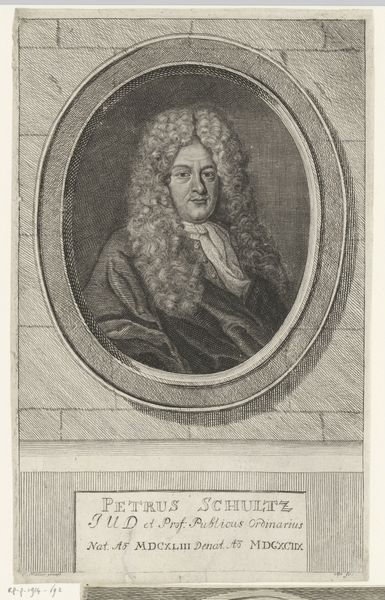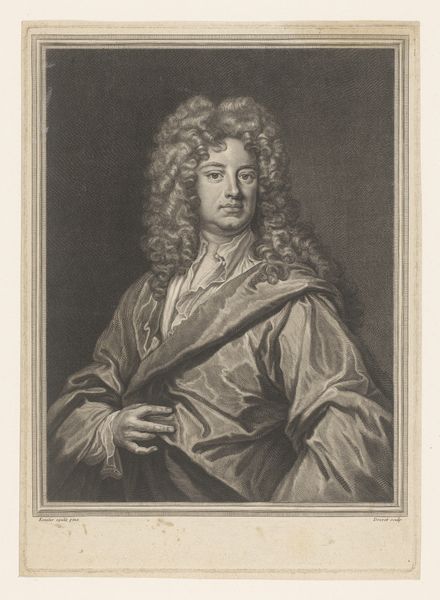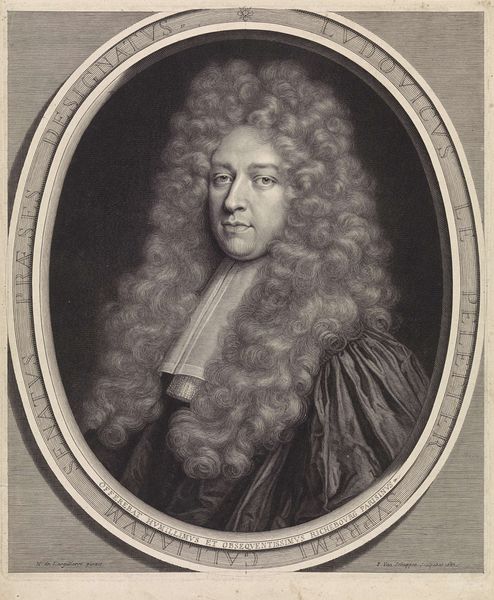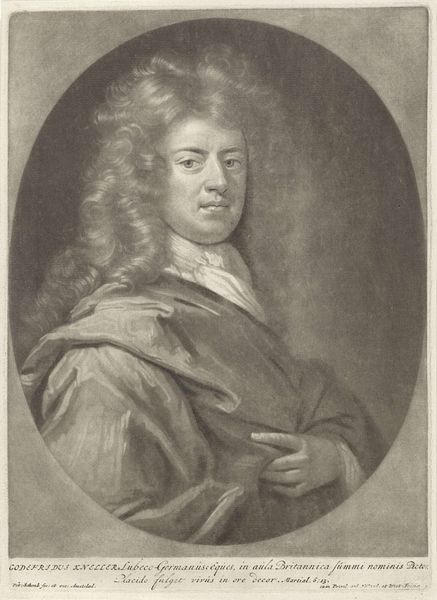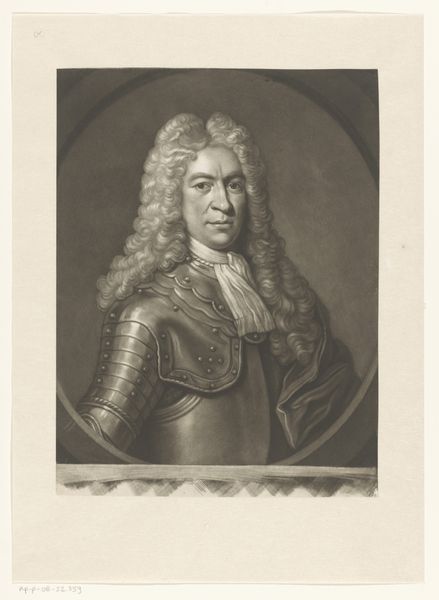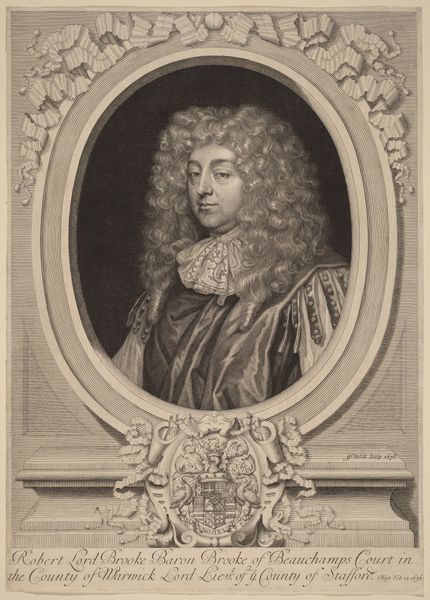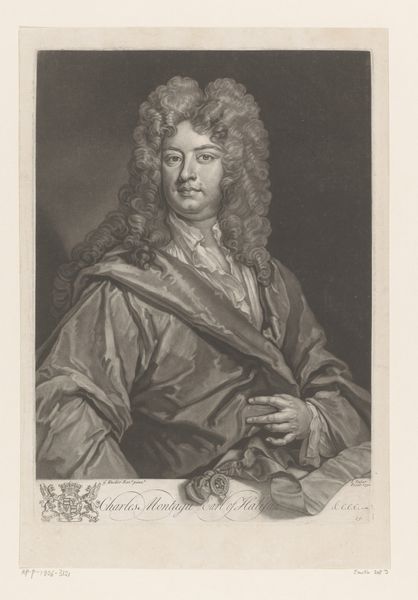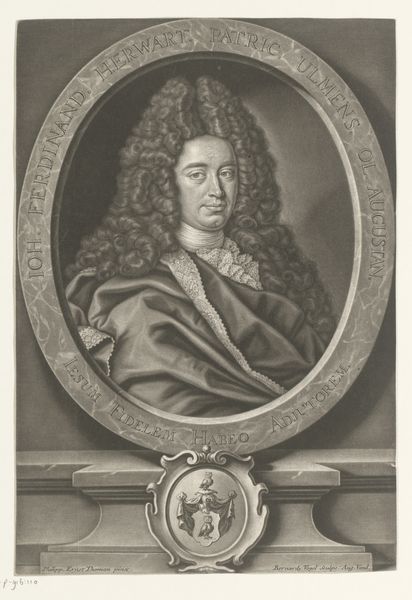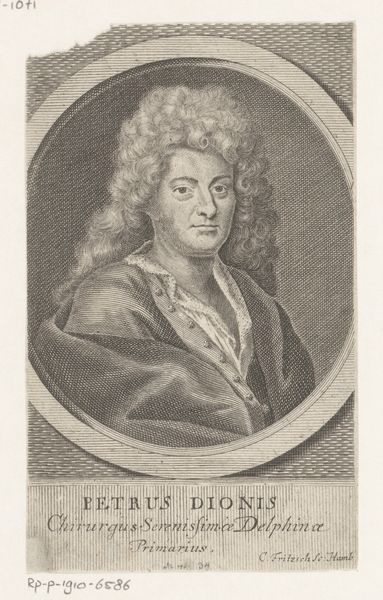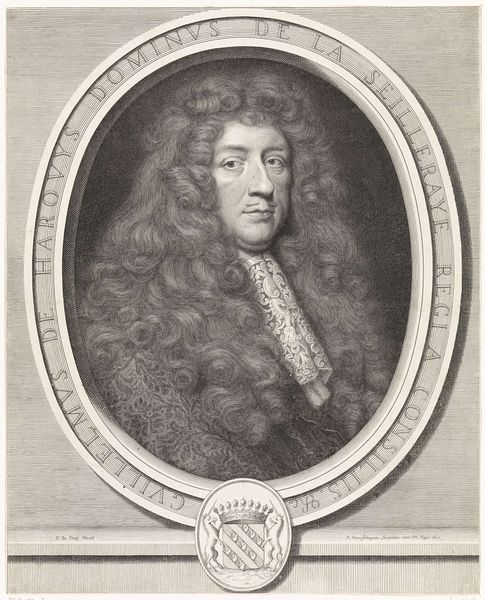
print, engraving
#
portrait
#
baroque
# print
#
charcoal drawing
#
pencil drawing
#
portrait drawing
#
engraving
Dimensions: height 348 mm, width 252 mm
Copyright: Rijks Museum: Open Domain
Curator: The print before us is a portrait of John Bannister, dating from somewhere between 1690 and 1704. It's rendered through engraving, giving it a unique textural quality. Editor: It feels… self-conscious. He seems aware of being seen, carefully composed. Curator: It certainly projects a carefully constructed image. Consider the politics of portraiture at the time; these images weren't simply likenesses. What might the wig signify in terms of power and status during this era? Editor: Oh, absolutely! That elaborate wig speaks volumes. Think of the symbols embedded in its very shape, the controlled curls suggesting order, reason, and a mastery of nature itself – all crucial virtues for the ruling class at the time. Curator: And look at how the drapery falls – it isn't merely decorative. Its cascade around his shoulders mirrors the weight and importance he carries in society. How does this portrait work within larger socio-political frameworks? Editor: Indeed, it reminds me of other engraved portraits of the period— almost a type that stood for belonging to a specific moment in history. Beyond wealth, it represents the ideals of a specific social strata and it evokes associations with intellectual prowess. Curator: I agree, the engraving adds another layer of significance. The act of creating this image through that medium reflects the mechanical reproduction and dissemination of power in a rapidly changing world. How do you see this artwork functioning as a tool of social control? Editor: It's a subtle but persistent form of affirmation, creating and perpetuating an image that reinforces the structures in place. This makes me wonder about how Bannister saw himself. Is this a true reflection or is it wish fulfillment? Curator: That ambiguity, I think, is at the heart of the piece's complexity. Even now, centuries later, the question of representation versus reality remains resonant. Editor: Yes, and I find that tension profoundly captivating. Curator: It encourages us to critically examine who holds power, how it's visualized, and what systems of belief those representations support. Editor: And for me, reflecting on its symbolic layers adds depth to what could simply be seen as just another portrait.
Comments
No comments
Be the first to comment and join the conversation on the ultimate creative platform.
